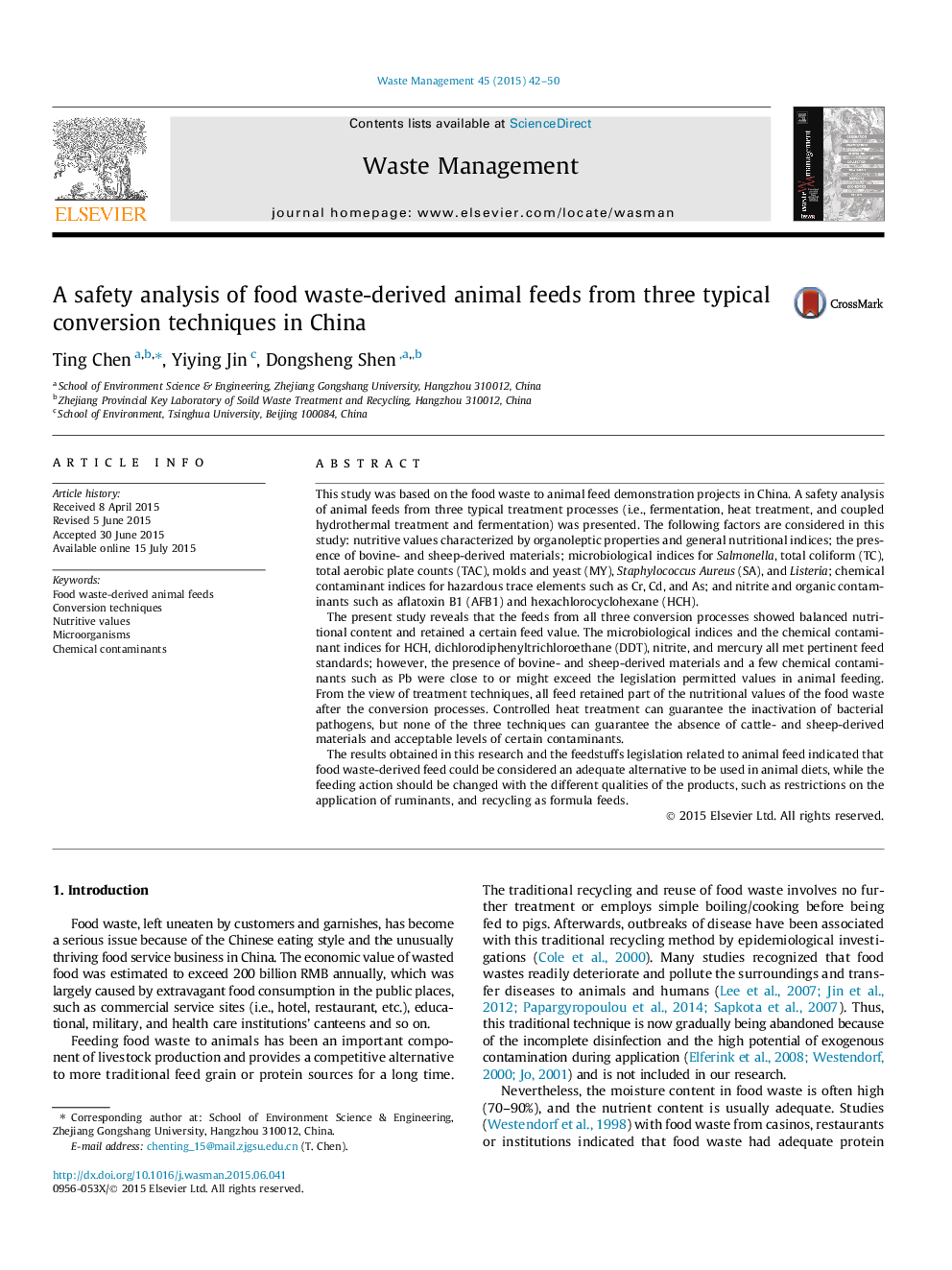| کد مقاله | کد نشریه | سال انتشار | مقاله انگلیسی | نسخه تمام متن |
|---|---|---|---|---|
| 6354268 | 1622640 | 2015 | 9 صفحه PDF | دانلود رایگان |
- Cattle- and sheep-derived materials and trace elements are key pollutants in feed.
- Food waste-derived animal feeds had an adequate and balanced nutritional value.
- Three conversion techniques can guarantee the inactivation of bacteria.
- Food waste-derived feed is an adequate alternative when supplemented properly.
This study was based on the food waste to animal feed demonstration projects in China. A safety analysis of animal feeds from three typical treatment processes (i.e., fermentation, heat treatment, and coupled hydrothermal treatment and fermentation) was presented. The following factors are considered in this study: nutritive values characterized by organoleptic properties and general nutritional indices; the presence of bovine- and sheep-derived materials; microbiological indices for Salmonella, total coliform (TC), total aerobic plate counts (TAC), molds and yeast (MY), Staphylococcus Aureus (SA), and Listeria; chemical contaminant indices for hazardous trace elements such as Cr, Cd, and As; and nitrite and organic contaminants such as aflatoxin B1 (AFB1) and hexachlorocyclohexane (HCH).The present study reveals that the feeds from all three conversion processes showed balanced nutritional content and retained a certain feed value. The microbiological indices and the chemical contaminant indices for HCH, dichlorodiphenyltrichloroethane (DDT), nitrite, and mercury all met pertinent feed standards; however, the presence of bovine- and sheep-derived materials and a few chemical contaminants such as Pb were close to or might exceed the legislation permitted values in animal feeding. From the view of treatment techniques, all feed retained part of the nutritional values of the food waste after the conversion processes. Controlled heat treatment can guarantee the inactivation of bacterial pathogens, but none of the three techniques can guarantee the absence of cattle- and sheep-derived materials and acceptable levels of certain contaminants.The results obtained in this research and the feedstuffs legislation related to animal feed indicated that food waste-derived feed could be considered an adequate alternative to be used in animal diets, while the feeding action should be changed with the different qualities of the products, such as restrictions on the application of ruminants, and recycling as formula feeds.
Journal: Waste Management - Volume 45, November 2015, Pages 42-50
